The
Hay Internment and POW camps at
Hay, NSW were established during World War II as prisoner-of-war and internment centers, due in no small measure to the isolated location of the town. Three high-security camps were constructed in 1940 each holding 1000 people. The men lived in huts and living conditions were often difficult. Located on semi-arid grazing land, the
camp was hit by dust storms caused by a drought during the war years. Clothing and personal items like toothbrushes were at times insufficient.
The internees did, however, have a successful market garden and
farm, which provided the
camp with vegetables, eggs, poultry, milk and animal fodder.
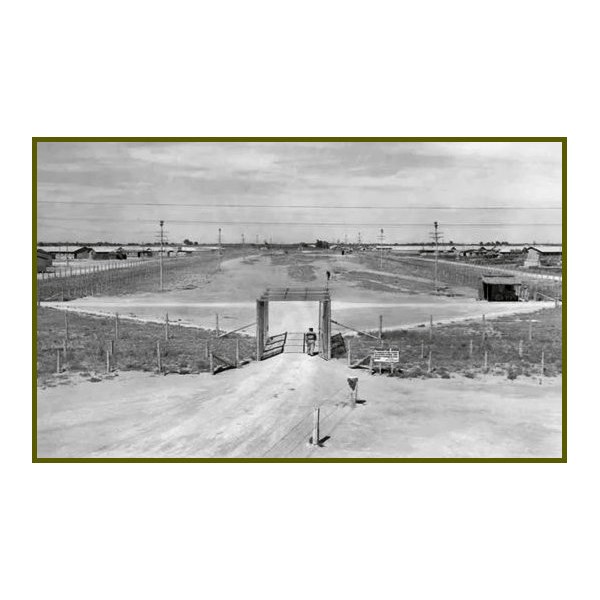
The Hay camp
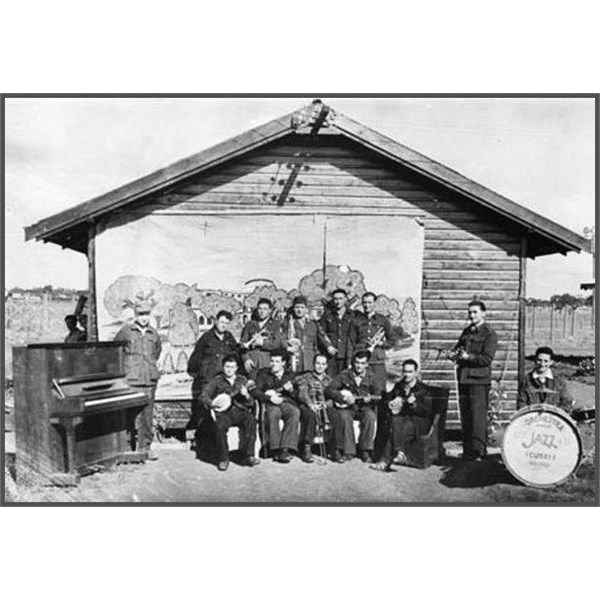
The Hay camp orchestra made up of Italian prisoners of war, 1943
The German and Italian internees also established
camp schools, handiwork classes and a newspaper; they played soccer and designed a type of money to be used in the
camp.
The first arrivals were over two thousand refugees from Nazi Germany and Austria, most of whom were Jewish; they had been interned in the
United Kingdom when fears of an armed invasion of Britain were at their peak. The British government then made the decision to forcibly transport these refugees to Australia on the HMT Dunera. The internees were kept in conditions on board the Dunera that were cruel & inhumane, and after the war the Dunera story became quite infamous, leading the British government to apologise for their egregious mistreatment of innocent civilian refugees. The internees arrived at
Hay on 7 September 1940 by four trains from
Sydney. They were interned in Camps 7 and 8 (located near the
Hay showground) under the guard of the 16th Garrison Battalion of the Australian Army.
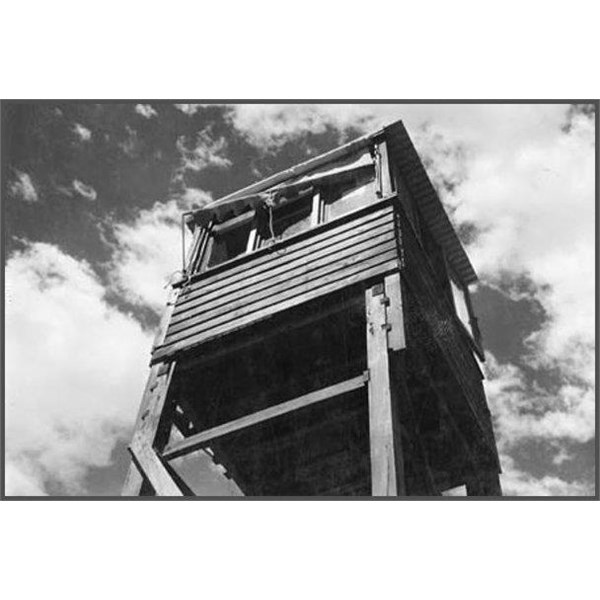
The watchtower at Hay camp
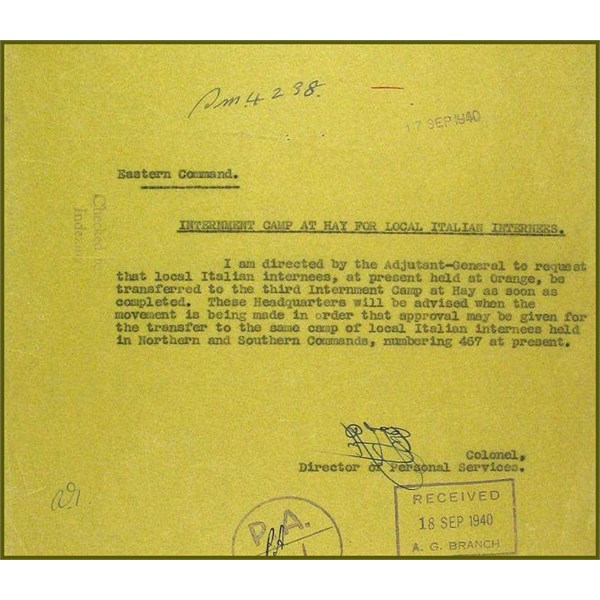
Hay Internment Camp document
In November 1940 the other compound at
Hay,
Camp 6 (near the
Hay Hospital), was occupied by Italian civilian internees. Camps 7 and 8 were vacated in May 1941 when the Dunera internees left
Hay; some were sent to
Orange (NSW), others to Tatura in Victoria, and others to join the Pioneer Corps of the Australian Army. Upon their departure Italian prisoners-of-war were placed in Camps 7 and 8. In December 1941 Japanese internees (some from
Broome and islands north of Australia) were conveyed to
Hay and placed in
Camp 6. In April 1942 the River
Farm began operating on the eastern edge of the township, enabling market-gardening and other
farm activities to be carried out by the Italian internees and POWs. In February 1945, in the wake of the Cowra POW break-out, a large number of Japanese POWs were transferred to
Hay and placed in the three high-security compounds.
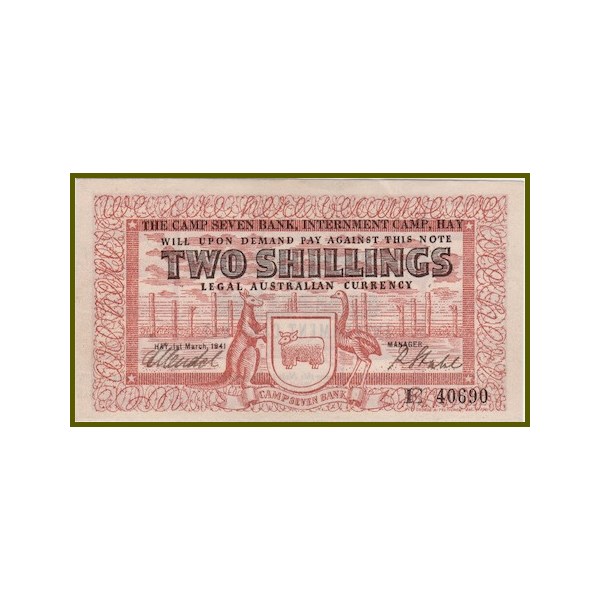
The Camp 7 Hay Internment Camp 2 Shilling note
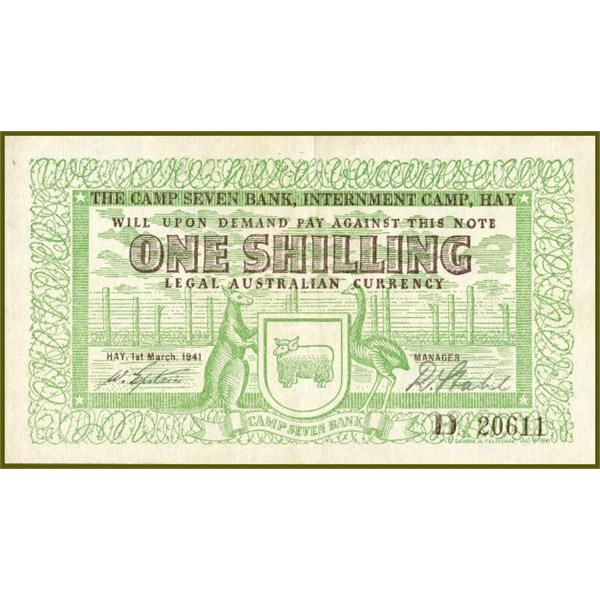
The Camp 7 Hay Internment Camp 1 Shilling note

The Camp 7 Hay Internment Camp 6 Pence
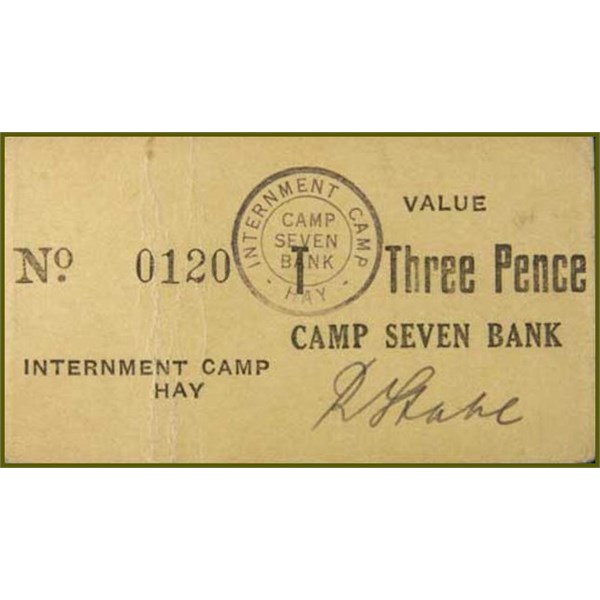
Hay Internment Camp Threepence
On 1 March 1946 the Japanese POWs departed from
Hay in five trains, transferred to Tatura. During 1946 the Italians who remained at
Hay were progressively released or transferred to other camps, and the
Hay camps were dismantled and building materials and fittings sold off by June the following year.
Hay Military
Post Office was open from 4 December 1940 until 29 June 1946, defining the main period of use of the facility.
By far the best known (and most notorious) instance of wartime internment in Australia was the Dunera affair. Following the fall of France and the evacuation of Dunkirk, the British Government responded to public panic over the 'enemy within' and temporarily interned thousands of foreign nationals. Canada and Australia agreed to assist the 'mother country' with the process and, accordingly, in July 1940, HMT Dunera set sail from Liverpool to
Sydney, carrying 2 542 male 'enemy aliens.' Although the group included some 250 German Nazis and 200 Italian Fascists, the vast majority of the deportees were strongly anti-Fascist and two-thirds of them were Jews.
The harrowing circumstances of the Dunera's voyage out to Australia have been documented by Bartrop, Pearl and Patkin, among others. The maltreatment of prisoners by sections of the British escort troops earned the Dunera the label 'hellship.'50 On arrival in
Melbourne in September 1940, 500 deportees were disembarked and transferred to the Tatura internment
camp while the remaining men and youths went on to
Sydney and were transferred to the
Hay camps and, subsequently, to Tatura.
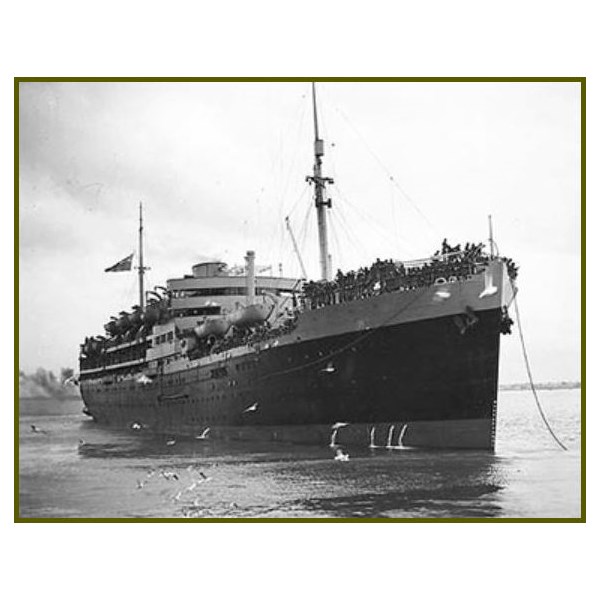
HMT Dunera, 1940
Intense criticism of the deportation and incarceration of unfortunate persons, most of them totally opposed to the Nazi regime, was voiced both in Britain and Australia, and resulted in the British Government expressing regret for the incident as early as October 1940. Major Julian Layton of the
Home Office was sent to Australia to assist with the repatriation process. Charges were laid against a number of the Dunera guards, and compensation payments were allocated to the deportees. Bureaucratic delays and inefficiency notwithstanding, the internees were all released in due course. Some 900 elected to remain in Australia, and a substantial number of them served with Australia's defence forces, notably in the 8th Employment Company.
The internment at
Hay of this assemblage of refugees from Nazi oppression in Europe was an important milestone in Australia’s cultural history. Just fewer than half of those interned at
Hay eventually chose to remain in Australia. The influence of this group of men on subsequent cultural, scientific and business developments in Australia is difficult to over-state; they became an integral and celebrated part of the nation’s cultural and intellectual life.
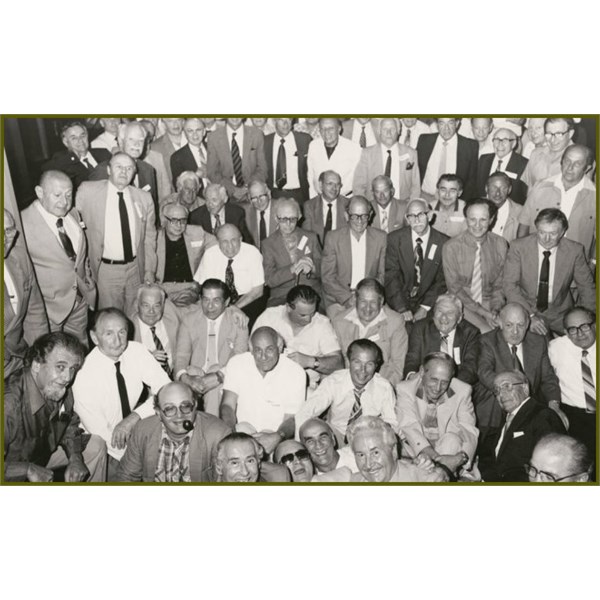
reunion of the 'Dunera' boys, held in Melbourne, November 1984
The 'Dunera Boys' are still fondly remembered in
Hay; every year the town holds a 'Dunera Day' in which many surviving internees return to the site of their former imprisonment. Of the 900 'Dunera Boys' who remained in Australia after being sent to the
camp, approximately 50 had survived into 2010
Hay camp closed in 1946.
.